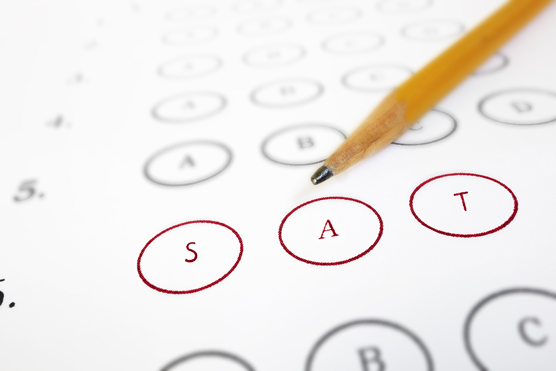They say to err is to be human. We all make mistakes, it’s bound to happen. But one place you’d do well to avoid mistakes is the ACT and SAT. Preparation is key, and knowing the common mistakes made on the exam is the best way to avoid them.
You can avoid the bubble sheet mistakes on SAT exam day
Not Bubbling In
It’s easy to forget about the scantron and just circle the answers in your practice test. However, using a scantron can be confusing, so you don’t want your first time using one to be on the day you take the SAT/ACT.
During your practice tests, practice bubbling in answers as you work through your practice test. You want to get practice bubbling in so that you don’t accidentally bubble in wrong answers on the day of the test. If you have time, I recommend double-checking your scantron answers with your booklet answers at the end of the section, so you make sure you didn’t accidentally bubble any incorrectly.
Timing Is the Key
Another factor that confounds every test taker is timing. As far as bubbling answers is concerned, you must fill in every answer before time is called, as continuing to write after a section has ended will surely have your test invalidated. Here, as in every other aspect of test taking, we can weigh various options with an eye towards optimization:
- Answer each question in your test booklet, then fill in the matching bubble on your test grid.
2. Answer a page of questions in your test booklet, then fill in the matching bubbles on your test grid.
3. Answer all of the questions in a section in your test booklet, then fill in the matching bubbles on your test grid.
Mark all of Your Answers on the Test Booklet
Most students who apply for SAT first, read the question, decide on an answer, bubble it in on their question sheet, and then go on to the next. This is a very standard method that almost every student uses. It is a very time-consuming method. There are other disadvantages to it.
Turning to the sheet after every answer will break your flow and make you lose focus. And losing any of these two won’t help you stay efficient in the exam. First, mark your answer on the exam booklet to attempt the test better. Rather than bubbling the answer on the sheet, move on to the next question. Move on when you have circled your answer on the book itself.
Bubbling in Wrong Answers
Transferring the answer from the booklet to your head, to the answer sheet sounds simple enough, but even the best test-takers can get off a row sometimes, and that can throw a wrench in your whole answer sheet.
One great way to avoid mixing up the question number and answer bubble is by waiting to bubble in your answers until the end of the section. Instead, circle your answer on the test sheet and bubble in afterward. This will also save you time.
Grid-in Section:
- Mark no more than one circle per column.
- There are no negative answers (since there is no way to bubble in a negative sign).
- You’ll never include pi in your answer; you’ll use a decimal. For example, 3? would be written as 9.425.
- You can write answers as fractions or decimals, but you cannot use mixed numbers. For example, 3 ½ would need to grid in as either 3.5 or 7/2, since the grading machine will read 31/2.
- Write your answers in the boxes above the grid to avoid errors in the gridding.
- Some questions may have more than one correct answer.
- Know the gridding rules before taking the test.
It seems unfair to score you based on how well you fill in bubbles. To succeed in any endeavor, you must excel at everything, both large and small.
To learn more about the SAT Test prep strategy download a free eBook strategies-to-prepare-sat-in-an-effective-way










